🤝 Social Psychology: Essential Concepts for Reading Comprehension
Social psychology is the scientific study of how individuals think, feel, and behave in social contexts. It explores the influence of group dynamics, societal norms, and interpersonal relationships on human behavior. This discipline sheds light on phenomena like group decision-making, biases, and the complexities of human interaction. RC passages on social psychology often delve into experiments, theories, and real-world implications, making an understanding of these concepts vital for analyzing human behavior.
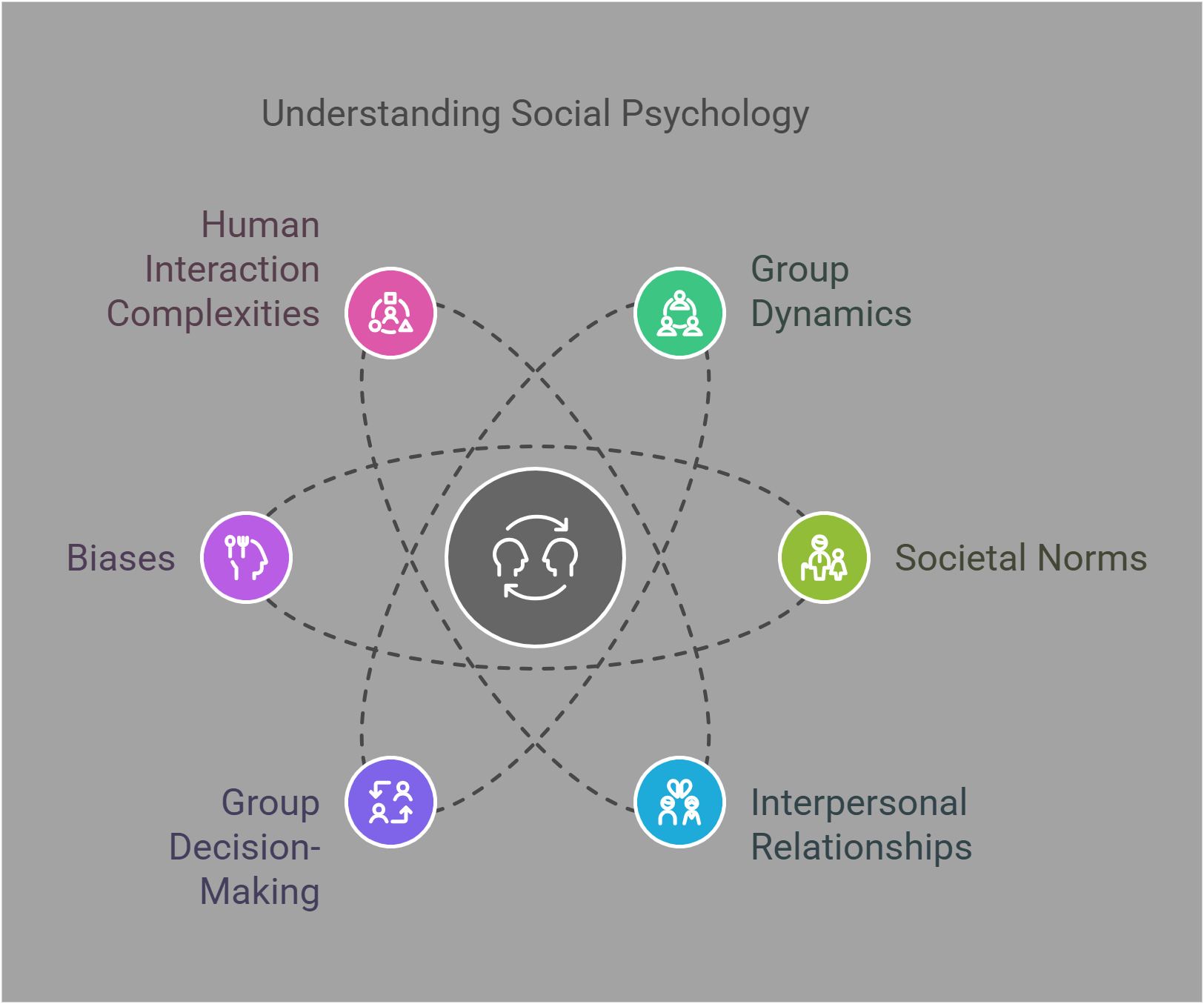
📋 Overview
This guide explores the following essential social psychology concepts:
- Groupthink
- Social Facilitation
- Stereotypes vs. Prejudices
- Bystander Effect
- Conformity vs. Obedience
- Altruism
- Social Identity Theory
- Interpersonal Attraction
- Self-Fulfilling Prophecy
- Implicit Bias
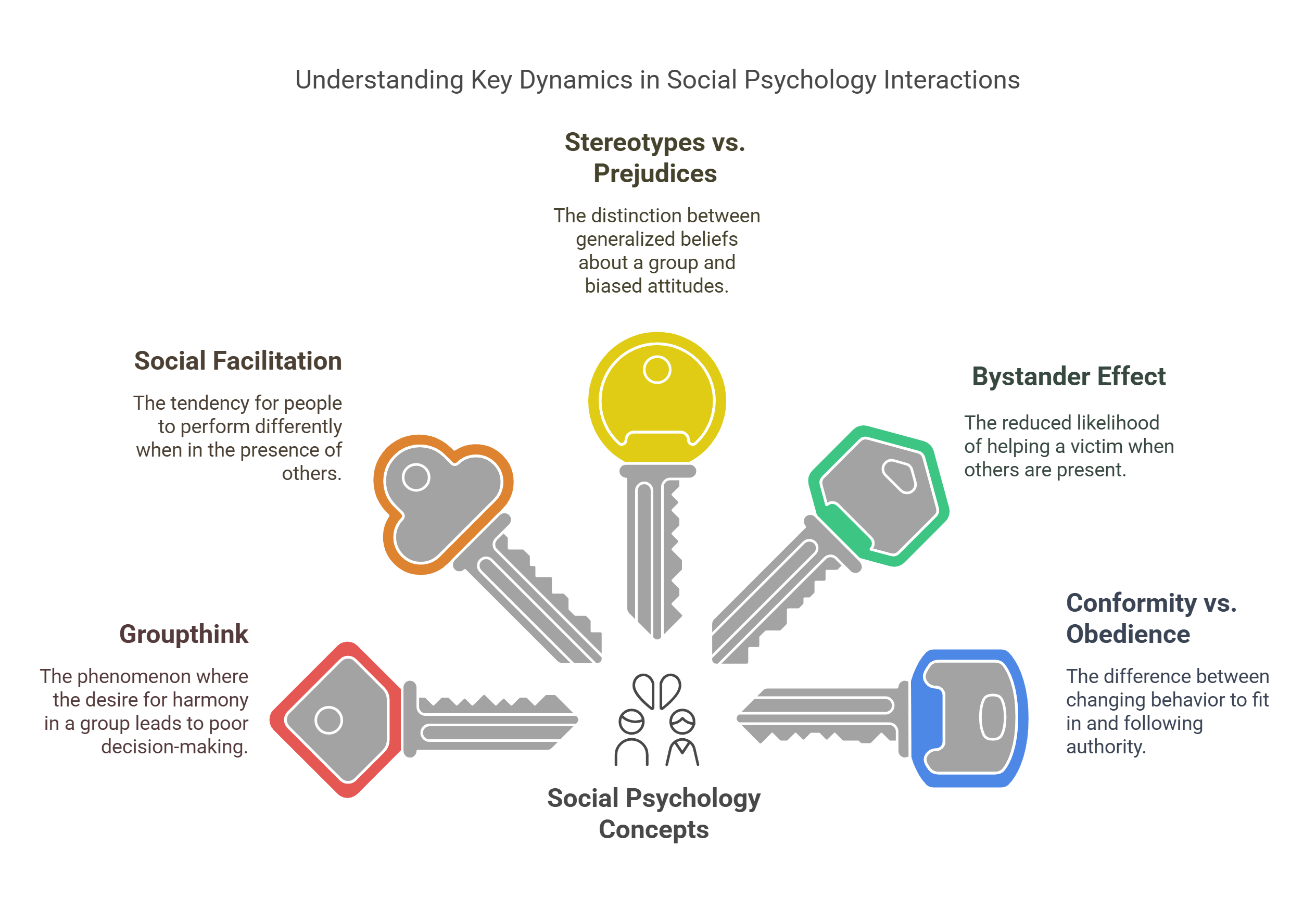
🔍 Detailed Explanations
1. Groupthink
Groupthink occurs when a group prioritizes consensus over critical analysis, often leading to poor decision-making. Members suppress dissenting opinions to maintain harmony, ignoring alternative solutions or risks.
- Key Features:
- Illusion of unanimity: Belief that everyone agrees.
- Self-censorship: Members withhold conflicting viewpoints.
- Pressure to conform: Dissenters face disapproval.
- Notable Examples: The Bay of Pigs invasion, where U.S. officials failed to critique a flawed plan.
Explained Simply: Groupthink is like a choir singing the wrong notes in unison because no one dares to point out the mistake.
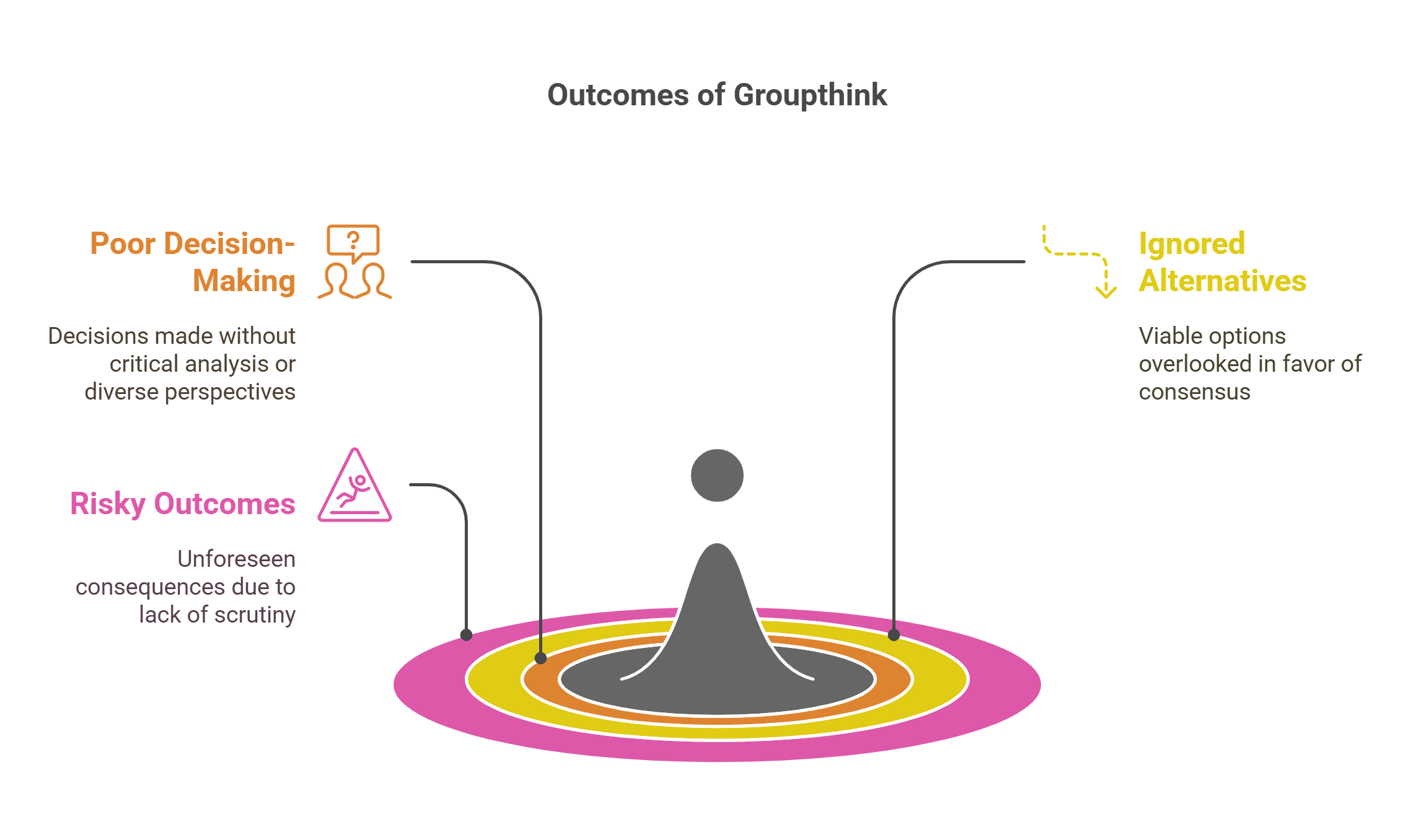
2. Social Facilitation
Social facilitation refers to the tendency for individuals to perform better on simple tasks and worse on complex tasks when in the presence of others. This phenomenon stems from heightened arousal caused by observation.
- Key Principles:
- Dominant Response: Strengthened by an audience (e.g., well-learned skills).
- Evaluation Apprehension: Concern about being judged by others.
- Applications: Athletes often perform better during competitions due to the presence of spectators.
Explained Simply: Social facilitation is like thriving under the spotlight—but only if you’re confident in your performance.
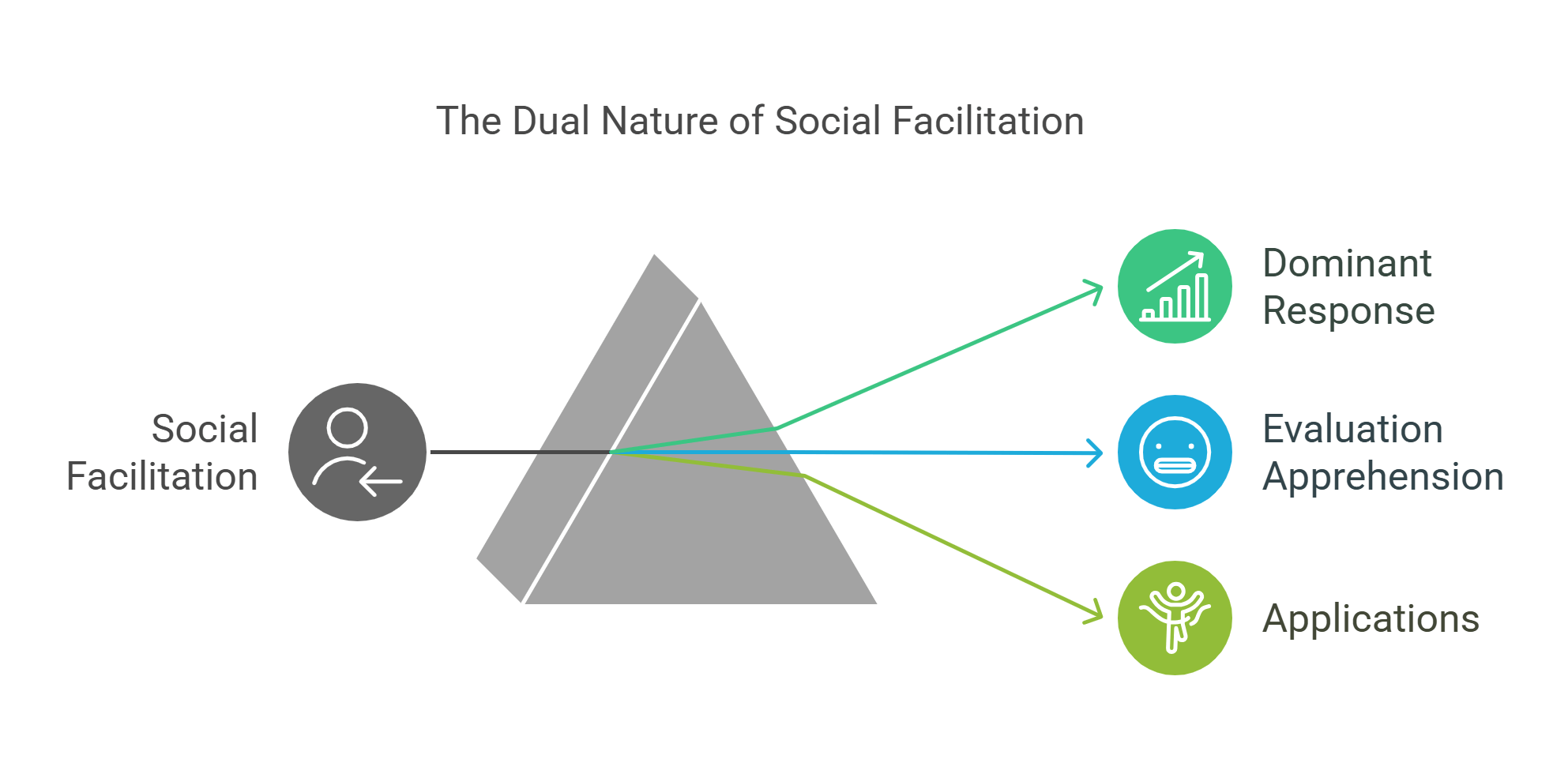
3. Stereotypes vs. Prejudices
While often conflated, stereotypes and prejudices differ significantly:
- Stereotypes: Overgeneralized beliefs about a group.
- Example: “All teenagers are lazy.”
- Prejudices: Negative attitudes or feelings toward a group, often stemming from stereotypes.
- Example: Disliking someone simply because they belong to a specific group.
Impact: Both contribute to discrimination, perpetuating societal inequalities.
Explained Simply: Stereotypes are the labels we stick on groups, while prejudices are the emotions those labels provoke.
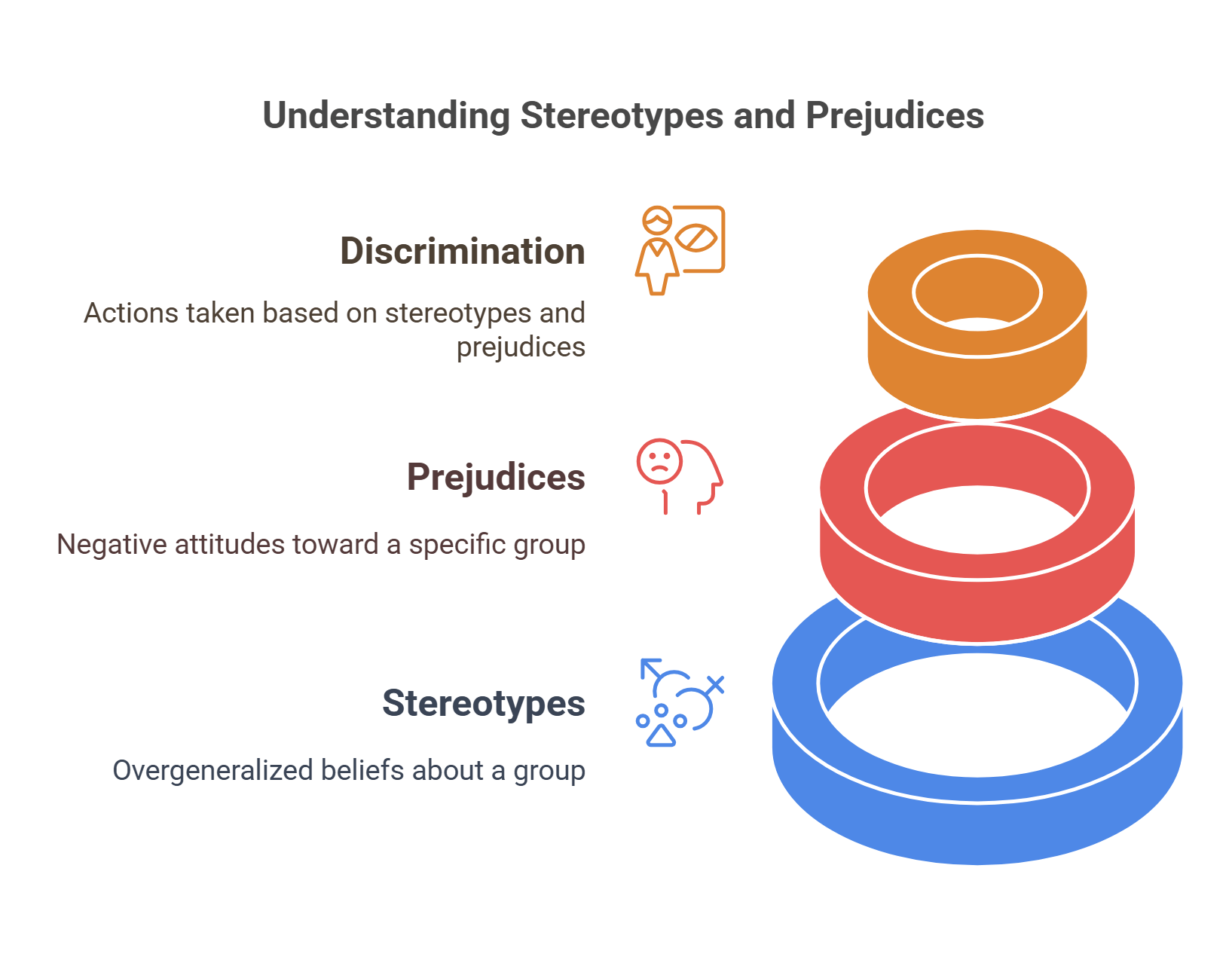
4. Bystander Effect
The bystander effect describes the phenomenon where individuals are less likely to help in emergencies when others are present. This occurs due to diffusion of responsibility, where each person assumes someone else will act.
- Notable Study: The murder of Kitty Genovese in 1964, where multiple witnesses failed to intervene, inspired research into this effect.
- Applications: Encouraging proactive behavior through education and awareness campaigns.
Explained Simply: The bystander effect is like everyone waiting for someone else to take charge, leaving no one to act.
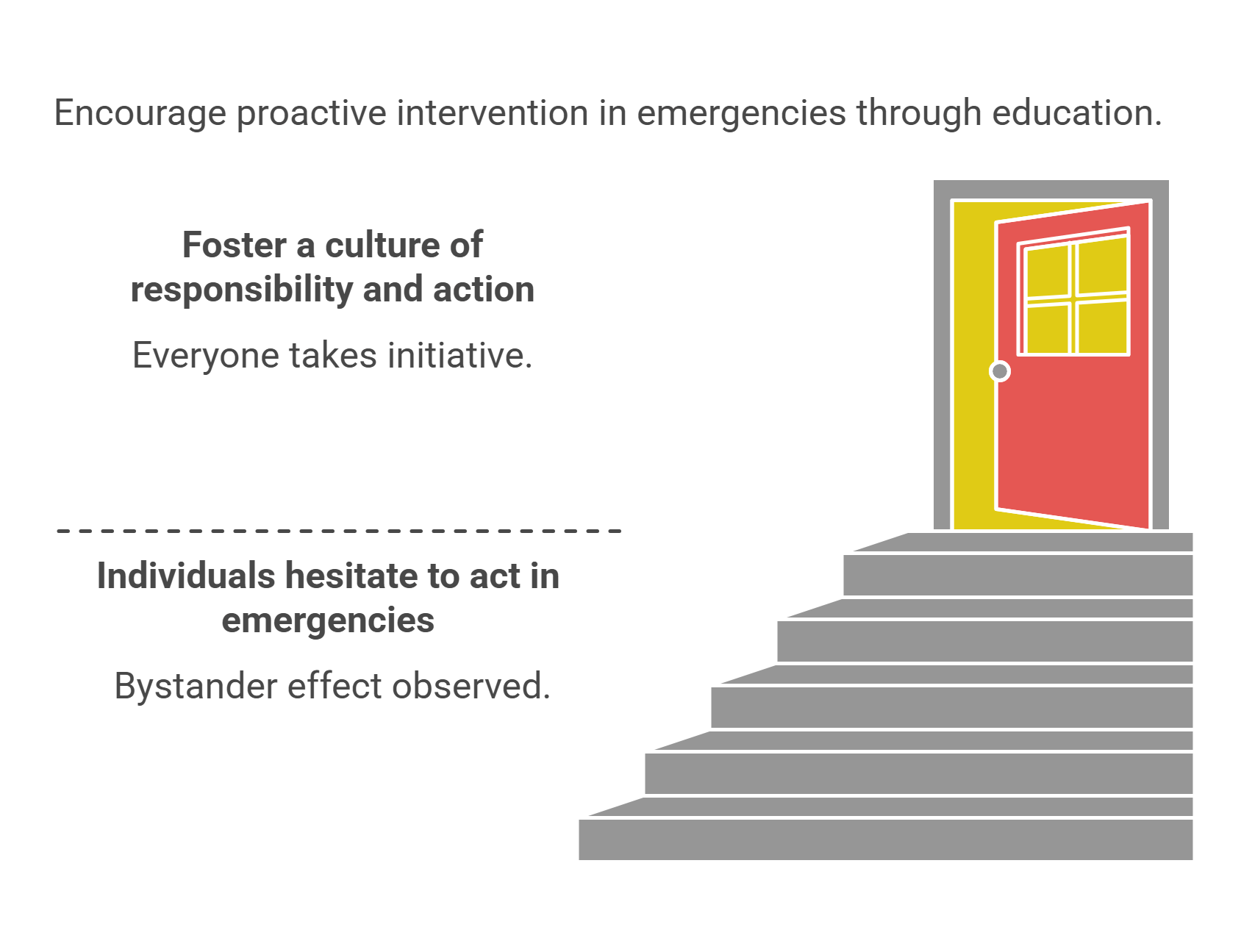
5. Conformity vs. Obedience
These two concepts explain how social influence shapes behavior:
- Conformity: Adjusting behavior to align with group norms.
- Key Study: Solomon Asch’s line experiments demonstrated how individuals conform even when the group is clearly wrong.
- Obedience: Following direct orders from an authority figure.
- Key Study: Stanley Milgram’s shock experiments revealed the extent to which people obey authority, even when it conflicts with their morals.
Explained Simply: Conformity is blending in with the crowd, while obedience is following the leader.
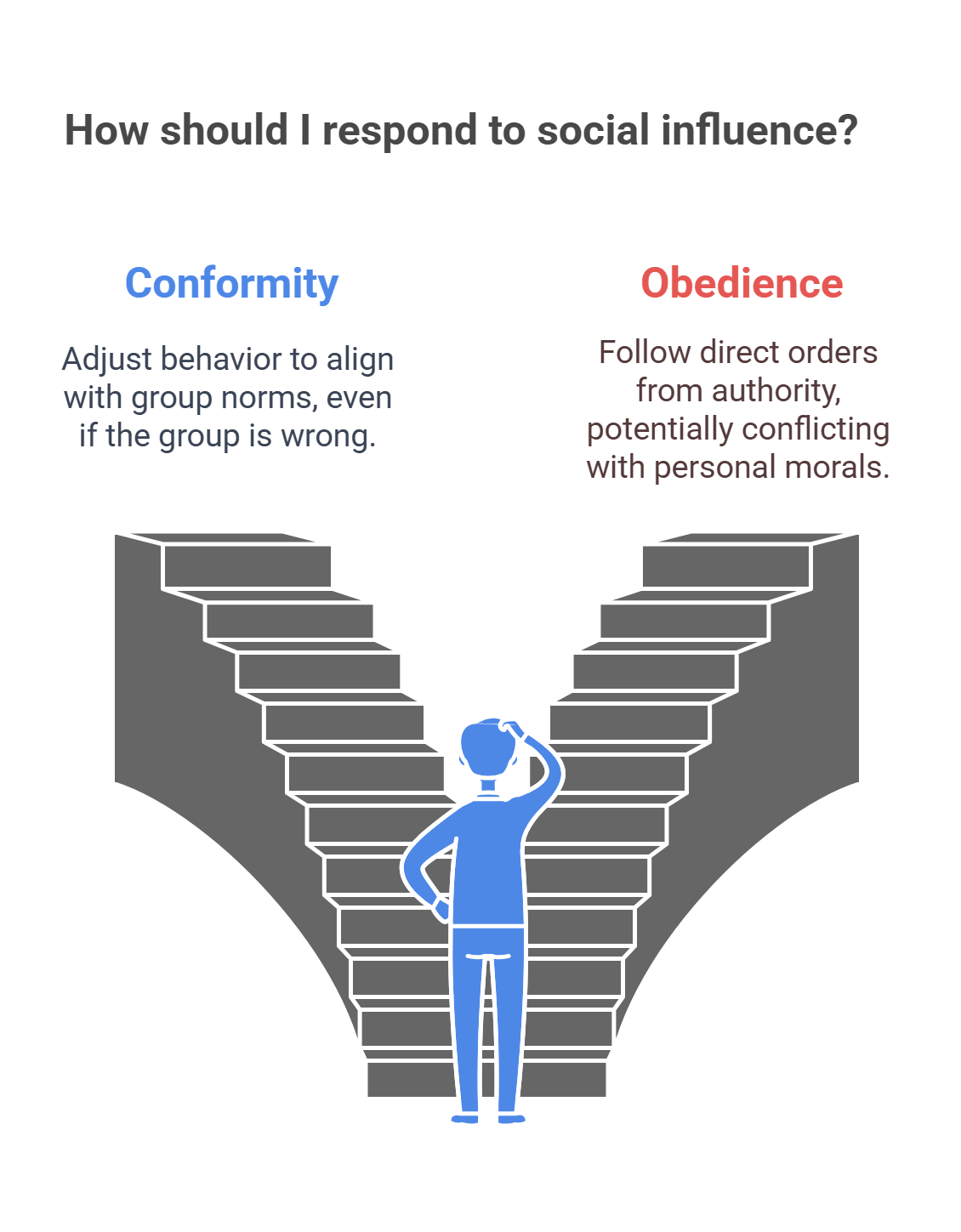
6. Altruism
Altruism refers to selfless acts performed for the benefit of others without expecting personal gain. It challenges traditional views of human behavior as purely self-serving.
- Key Theories:
- Kin Selection: Helping those who share genetic ties.
- Reciprocal Altruism: Assisting others with the expectation of future help.
- Applications: Altruism underpins charitable acts and volunteerism.
- Example: Donating anonymously to a cause without seeking recognition.
Explained Simply: Altruism is like lighting someone else’s candle without worrying about your own.
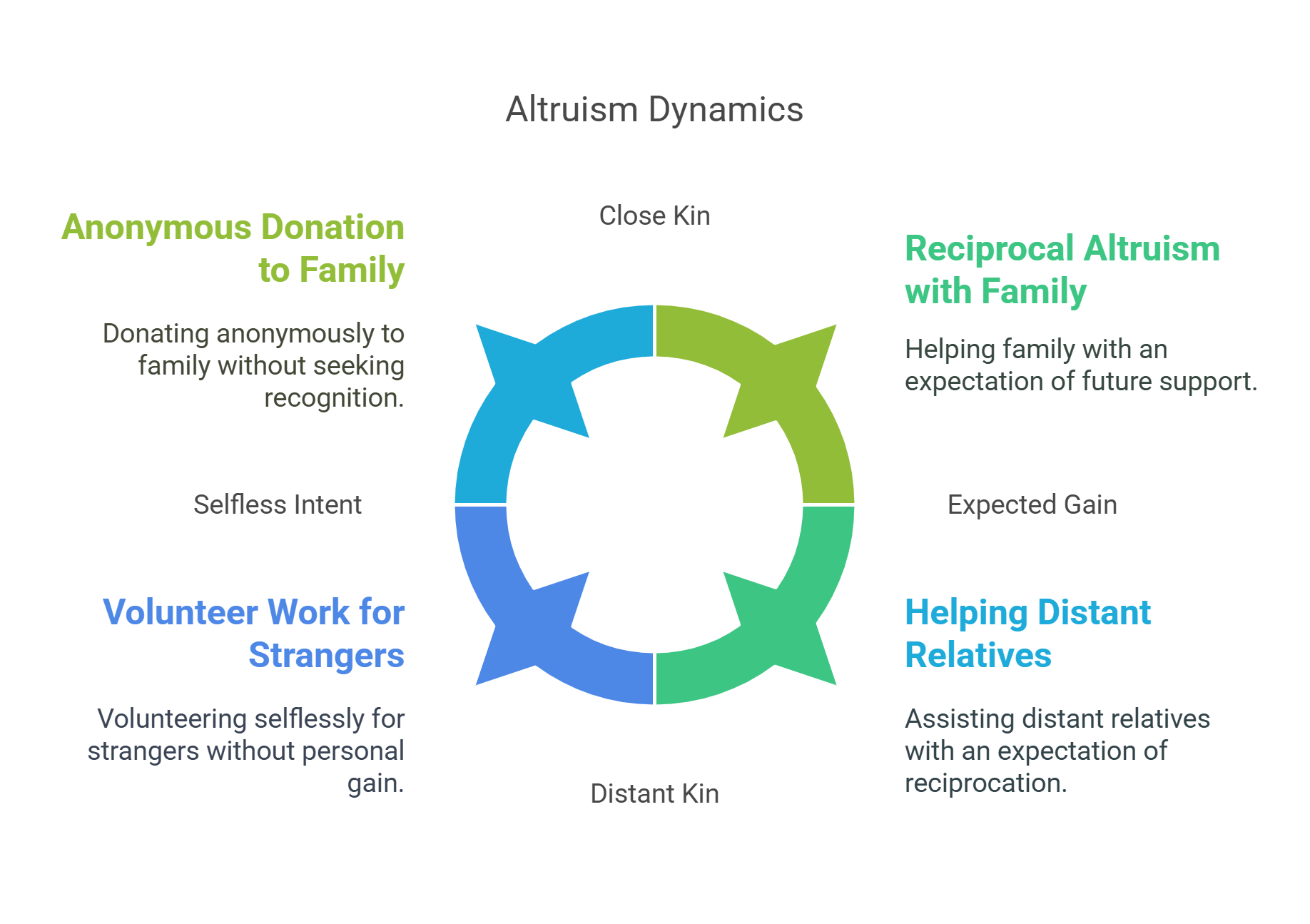
7. Social Identity Theory
Proposed by Henri Tajfel, this theory explains how individuals derive self-esteem and identity from their membership in social groups. It sheds light on in-group favoritism and out-group discrimination.
- Core Concepts:
- In-Group: Groups individuals identify with.
- Out-Group: Groups perceived as different or opposing.
- Applications: Understanding group-based conflicts and societal divisions.
- Example: Sports fans exhibiting loyalty to their team while disparaging rivals.
Explained Simply: Social identity theory is like defining yourself by the teams or groups you support.
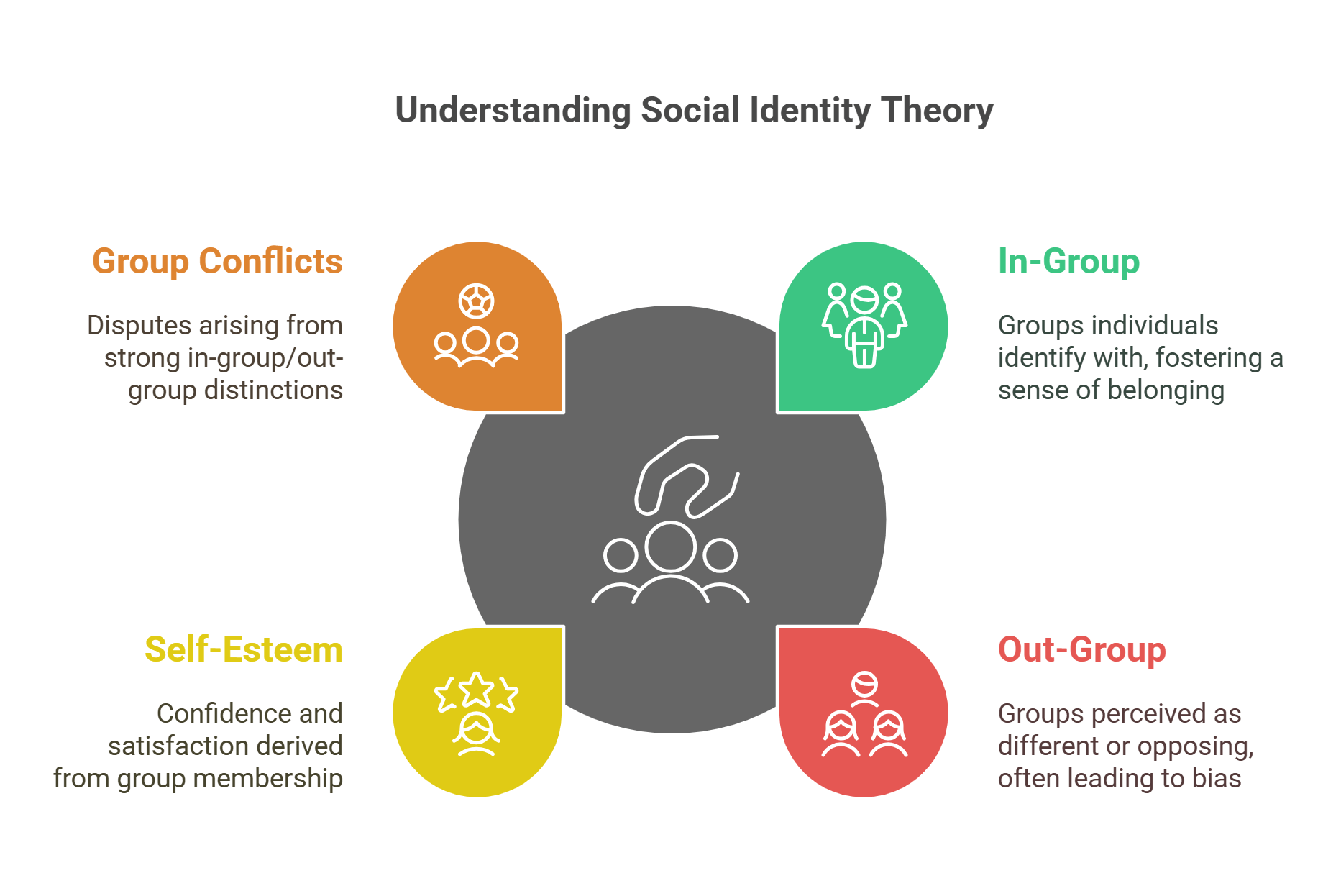
8. Interpersonal Attraction
Interpersonal attraction explores why individuals form connections, whether romantic, platonic, or professional. Factors influencing attraction include:
- Physical Attractiveness: Often associated with positive traits.
- Similarity: Shared interests or values strengthen bonds.
- Proximity: Frequent interactions increase familiarity and liking.
Example: Coworkers who collaborate regularly are more likely to develop friendships.
Explained Simply: Interpersonal attraction is like finding magnets that pull you closer to certain people.
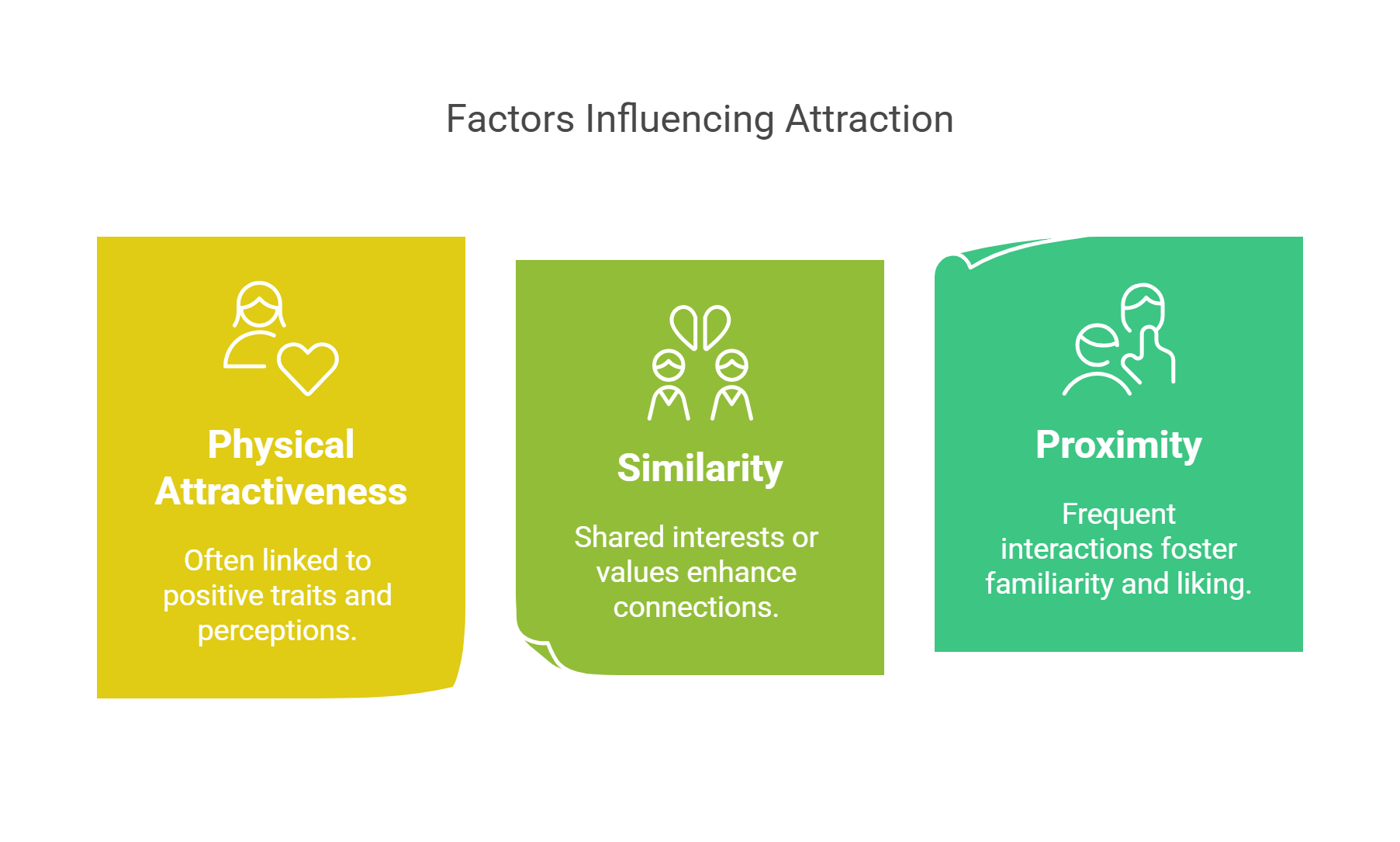
9. Self-Fulfilling Prophecy
A self-fulfilling prophecy occurs when expectations influence behavior in a way that causes the expectation to come true.
- Mechanism:
- Beliefs affect actions, which then confirm the original belief.
- Applications:
- Education: Teachers’ expectations of students often shape their performance.
- Workplace: Managers’ beliefs about employees impact their motivation and outcomes.
Example: Believing you’ll fail a test may lead to poor preparation, resulting in failure.
Explained Simply: A self-fulfilling prophecy is like planting seeds of doubt or confidence that shape what grows.
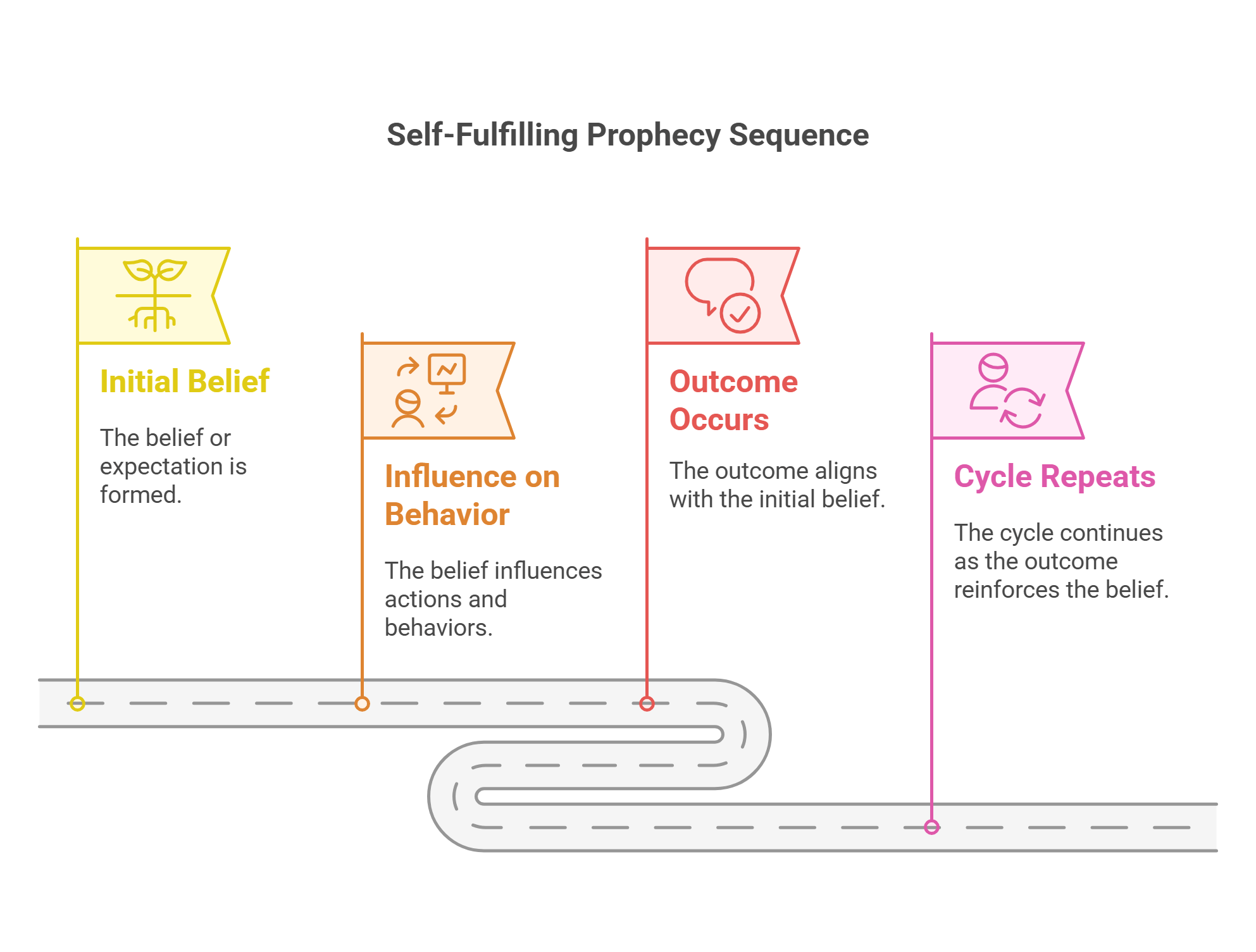
10. Implicit Bias
Implicit biases are unconscious attitudes or stereotypes that influence decisions and actions. These biases operate below conscious awareness, often contradicting stated beliefs.
- Key Features:
- Pervasive across cultures and demographics.
- Difficult to detect without intentional self-reflection or tools like the Implicit Association Test (IAT).
- Impact: Implicit biases affect hiring, policing, and healthcare outcomes.
- Solutions: Awareness training and structured decision-making processes.
Explained Simply: Implicit bias is like wearing tinted glasses—you see the world in a way you don’t even realize.
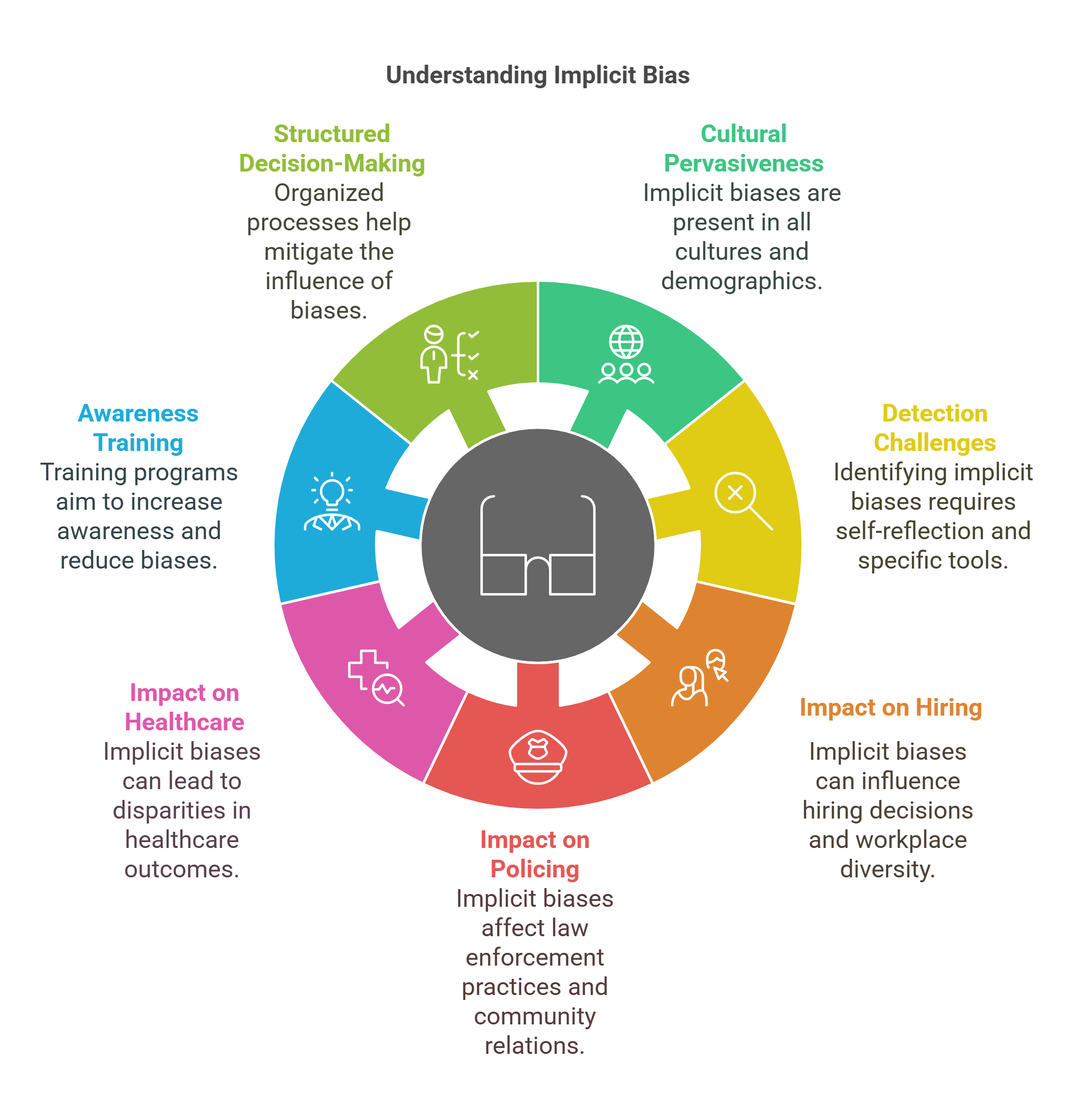
✨ Conclusion
Social psychology offers profound insights into the complexities of human interaction and group dynamics. By understanding concepts like groupthink, implicit bias, and the bystander effect, readers can better analyze RC passages and navigate real-world social scenarios. Social psychology not only explains behaviors but also empowers individuals to foster inclusivity, collaboration, and positive change in society.










